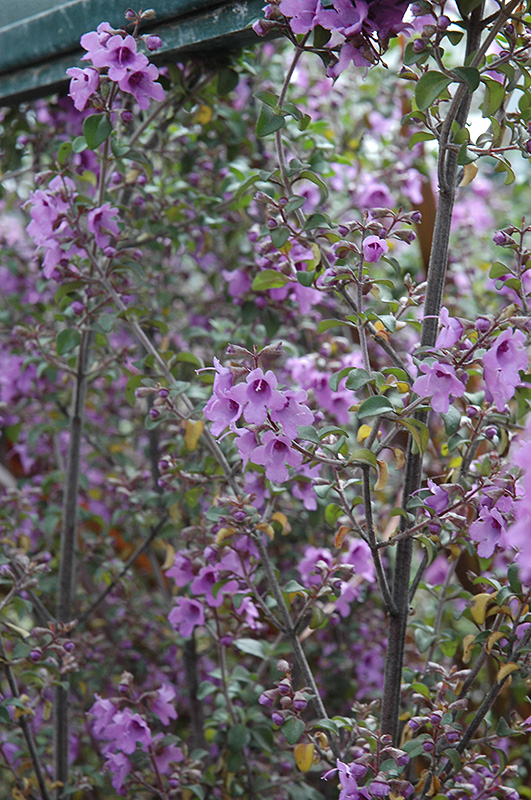Plant Finder
Round Leafed Mint Bush
Prostanthera rotundifolia
Height: 10 feet
Spread: 6 feet
Sunlight:
![]()
![]()
Hardiness Zone: 8b
Other Names: Australian Mint Bush
Description:
A beautiful upright evergreen shrub with small roundish blue-green leaves that are pleasantly aromatic; an abundance of small bell shaped flowers in mid-spring; a soft textured shrub that is stunning all season long
Ornamental Features
Round Leafed Mint Bush is covered in stunning clusters of violet bell-shaped flowers at the ends of the branches in mid spring. It has attractive bluish-green evergreen foliage which emerges green in spring. The small round leaves are highly ornamental and remain bluish-green throughout the winter.
Landscape Attributes
Round Leafed Mint Bush is a multi-stemmed evergreen shrub with an upright spreading habit of growth. Its relatively fine texture sets it apart from other landscape plants with less refined foliage.
This is a relatively low maintenance shrub, and should only be pruned after flowering to avoid removing any of the current season's flowers. It has no significant negative characteristics.
Round Leafed Mint Bush is recommended for the following landscape applications;
- Accent
- Mass Planting
- General Garden Use
- Container Planting
Planting & Growing
Round Leafed Mint Bush will grow to be about 10 feet tall at maturity, with a spread of 6 feet. It has a low canopy, and is suitable for planting under power lines. It grows at a medium rate, and under ideal conditions can be expected to live for approximately 30 years.
This shrub does best in full sun to partial shade. It does best in average to evenly moist conditions, but will not tolerate standing water. It is not particular as to soil type or pH. It is somewhat tolerant of urban pollution. This species is not originally from North America.
Round Leafed Mint Bush makes a fine choice for the outdoor landscape, but it is also well-suited for use in outdoor pots and containers. Its large size and upright habit of growth lend it for use as a solitary accent, or in a composition surrounded by smaller plants around the base and those that spill over the edges. It is even sizeable enough that it can be grown alone in a suitable container. Note that when grown in a container, it may not perform exactly as indicated on the tag - this is to be expected. Also note that when growing plants in outdoor containers and baskets, they may require more frequent waterings than they would in the yard or garden.




